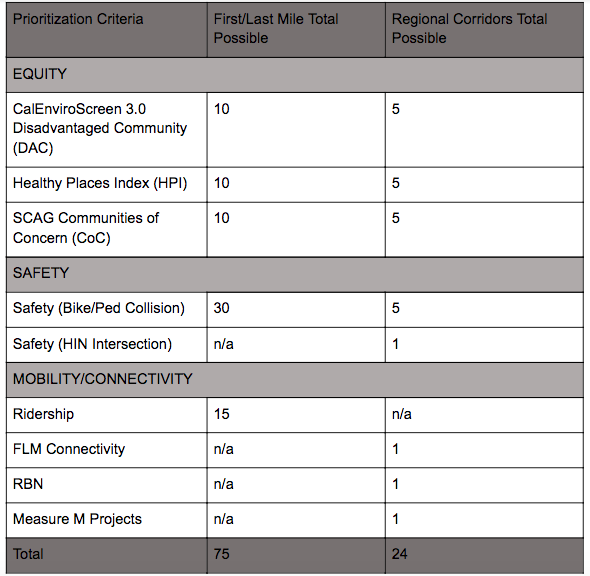
Remember how Measure M created the first ever dedicated source of local funds to support active transportation? Yeah, we’re pretty excited about that. We’d previously blogged about initial considerations that went into developing the ATP, and now we’re giving an update on the draft prioritization criteria that are currently under review by the Policy Advisory Council (PAC).
As a reminder, we’re talking about 2% of Measure M revenues, or roughly $17 million each year. Rather than widely asking communities to competitively apply for grant money, Metro is leaning towards defining where high-need exists, and then inviting that subset of potential projects to apply. That approach could result in less time wasted and also target the dollars to high-need communities.
For this inaugural 5-year funding cycle, 50% of the funds will support first/last-mile connections to transit, and 50% will support regional active transportation corridors (such as the LA River bike path), all of which are identified in Metro’s Active Transportation Strategic Plan (2016). Project sponsors will be asked to express their interest in a relatively low-burden way, and then Metro will use prioritization criteria to award funding. Draft criteria are as follows:

(You can read more about Metro’s proposed methodology for evaluating those criteria in this memo, and for those wanting to dig deeper, you can read through some Q&A’s that PAC members have raised here and here.) What do you think? Do those draft prioritization criteria hit the mark for getting active transportation funds to where need is greatest?If you have any ideas for how to strengthen the draft criteria or the funding program in general, please let your PAC representative, Bryn Lindblad, <blindblad@climateresolve.org> hear from you.